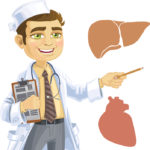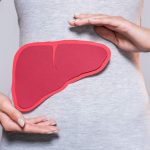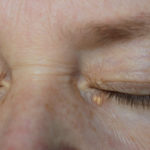
Previous
Sulfasalazine’s Potential for Reversing Fibrosis

Next
Chemicals and Indoor Air Pollution – Is Your Liver at Risk?
Fatty Liver Disease May Be an Extension of Heart Disease
While fatty liver is the build-up of excess fat in liver cells, one of its origins lies in the accumulation of fat in the blood vessels outside of the liver. Since fatty liver disease could be due to high blood cholesterol and triglycerides, experts believe it may be an extension of cardiovascular disease.
The likeness between cardiovascular disease and a fatty liver go beyond mere coincidence. Mounting similarities between the two conditions mean they not only share therapeutic goals, yet may even stem from the same cause. It also means that a person with cardiovascular disease would be wise to monitor their liver health – and vice versa. To bring these conditions into perspective, an astonishing 25 percent of Americans are estimated to be living with non-alcoholic fatty liver disease.
Cardiovascular disease is a broad term referring to any disorder in the body’s heart (cardio) or blood vessels (vascular). While fatty liver is the build-up of excess fat in liver cells, one of its proposed origins lies in excessive fat build-up in the blood vessels surrounding the liver. This hypothesis makes fatty liver disease a type of cardiovascular disease.
Nonalcoholic fatty liver disease (NAFLD) describes a range of conditions affecting people who drink little or no alcohol. The two primary differentiations of NAFLD include:
- Steatosis – The mildest type of NAFLD is simple fatty liver. This is an accumulation of fat within the liver typically unaccompanied by liver damage.
- Nonalcoholic steatohepatitis (NASH) – This potentially more serious type of fatty liver disease is associated with liver-damaging inflammation and the possible formation of fibrous tissue. In severe cases, NASH can progress to either cirrhosis or liver cancer.
Statistics
In 2004, the American Heart Association recognized cardiovascular disease as the leading cause of death in both sexes. Estimates for this year demonstrate that nearly 80 million Americans are affected by one or more forms of cardiovascular disease.
The most common liver disease in the U.S., non-alcoholic fatty liver disease affects more women than men and is found in all age groups, including children. Published in the April 2008 edition of Hepatology, the official journal of the American Association for the Study of Liver Diseases (AASLD), California researchers announced that approximately one in four American adults have non-alcoholic liver disease.
NAFLD Causes
Although it’s unclear exactly what causes NAFLD, many researchers believe that metabolic syndrome – a cluster of disorders that increase the risk of diabetes, heart disease and stroke – plays an important role in its development. Symptoms of metabolic syndrome include:
- Obesity
- High blood pressure
- One or more abnormal cholesterol levels including high levels of triglycerides, or low levels of high-density lipoprotein cholesterol (the good cholesterol)
- Resistance to insulin, a hormone that helps to regulate the amount of sugar in the blood
In NAFLD, the offending fat may come from other parts of the body or the liver may absorb an increased amount of fat from the intestine. Another possible explanation is that the liver may lose its ability to change fat into a form that can be eliminated.
Study
A study published in the May 2006 issue of Hepatology reported on the relationship between these two health conditions. Researchers found that elevation of an enzyme associated with NAFLD indicated an increased risk of coronary artery disease. The authors concluded that most of the risk of coronary heart disease in persons with elevated liver enzymes appears to be related to the increased prevalence of insulin resistance, obesity and central fat distribution, all of which are also considered predisposing conditions of NAFLD.
Atherosclerosis
A primary component of cardiovascular disease, atherosclerosis is the narrowing of arteries due to fatty build-up in the blood supply. By clogging a person’s blood vessels and therefore hindering blood flow through the organs, poor dietary habits can be a major contributor to metabolic syndrome. Consuming excess saturated fat and calories causes lipids to amass in the heart, blood vessels and liver. When the liver does not process and break down lipids effectively, fat is likely to accumulate.
Evidence suggests that people with high blood cholesterol levels* have a greater risk of developing cardiovascular disease and fatty liver disease. While eating fatty foods in itself likely won’t produce a fatty liver, eliminating fatty foods can pave the way for this organ’s recovery.
*A good supplement for heart health is Cholesterol Support. It is a synergistic combination of vitamins, minerals and natural ingredients designed to support normal, healthy levels of both low-density lipoproteins (LDL, aka “bad” cholesterol), and high-density lipoproteins (HDL, aka “good” cholesterol), as well as healthy homocysteine levels.
Risks
Before symptoms even arise, being aware of the fatty liver and cardiovascular disease relationship can prompt anyone at risk for one to also assume risk for the other. As precursors to NAFLD and cardiovascular disease, the three most important risk factors for metabolic syndrome and insulin resistance include:
- Overweight and Obesity – Your risk increases with every pound of excess weight. More than 70 percent of people with nonalcoholic steatohepatitis (NASH) are obese. Being overweight is defined as having a body mass index between 25 and 30, obesity as having a body mass index of 30 or higher.
- Diabetes – When your body becomes resistant to the effects of insulin or your pancreas doesn’t produce enough insulin to maintain a normal blood sugar (glucose) level, it can damage many organs, including the liver. Up to 75 percent of people with NASH also have diabetes.
- Hyperlipidemia – As many as 80 percent of people with NASH have elevated cholesterol and triglyceride levels.
Intervention
Experts agree that the preferred interventions for heart, vascular or liver disease include weight loss, exercise, improved diabetes control, avoidance of toxic substances and the use of cholesterol-lowering medications. While the best defense against these conditions is a combination of maintaining a healthy weight, normal cholesterol and blood sugar levels – taking the right herbal supplement can be an additional, powerful ally.
According to the National Center for Complementary and Alternative Medicine, “Milk thistle is believed to have protective effects on the liver and improve its function. Treatment claims also include lowering cholesterol levels and reducing insulin resistance in people with type 2 diabetes who also have cirrhosis.” In addition to its documented strength in protecting the liver from damage and supporting the liver in regenerating healthy new cells, high quality milk thistle extract is known to maintain ideal cholesterol and triglyceride levels.
Demonstrating risks such as obesity, diabetes and hyperlipidemia suggests that a person be evaluated for both heart and liver disease. With the increasing incidence of metabolic syndrome in Western countries, including obesity, diabetes, NAFLD and cardiovascular disease, preventive measures against these illnesses are gaining respect. Experts all agree that the best way to reduce your risk of developing NAFLD and cardiovascular disease is by maintaining a healthy weight and normal triglyceride levels while avoiding alcohol and other toxic substances. In addition to prescription medications helping to keep atherosclerosis and its complications under control, milk thistle is a natural solution for protecting the liver, lowering cholesterol and reducing insulin resistance. Combining the described intervention measures can help protect anyone at risk from this entire, related category of conditions, ranging from cardiovascular disease to NAFLD.
www.americanheart.org, Cardiovascular Disease Statistics, American Heart Association, Inc., 2007.
www.cnn.com, Nonalcoholic Fatty Liver Disease, Mayo Foundation for Education and Medical Research, 2007.
www.liverfoundation.org, Fatty Liver, American Liver Foundation, 2007.
www.mayoclinic.com, Men’s top 10 Health Threats: Mostly Preventable, Mayo Foundation for Medical Education and Research, 2007.
www.medicinenet.com, Body Fat, The Silent Killer, Dennis Lee, MD, MedicineNet, Inc., 2007.
www.medicalnewstoday.com, Patients With Nonalcoholic Fatty Liver Disease Have An Increased Risk Of Heart Disease, MediLexicon International Ltd., 2007.
www.redorbit.com, 1-in-4 U.S. Adults Has Fatty Liver Disease, redOrbit.com, March 2008.









